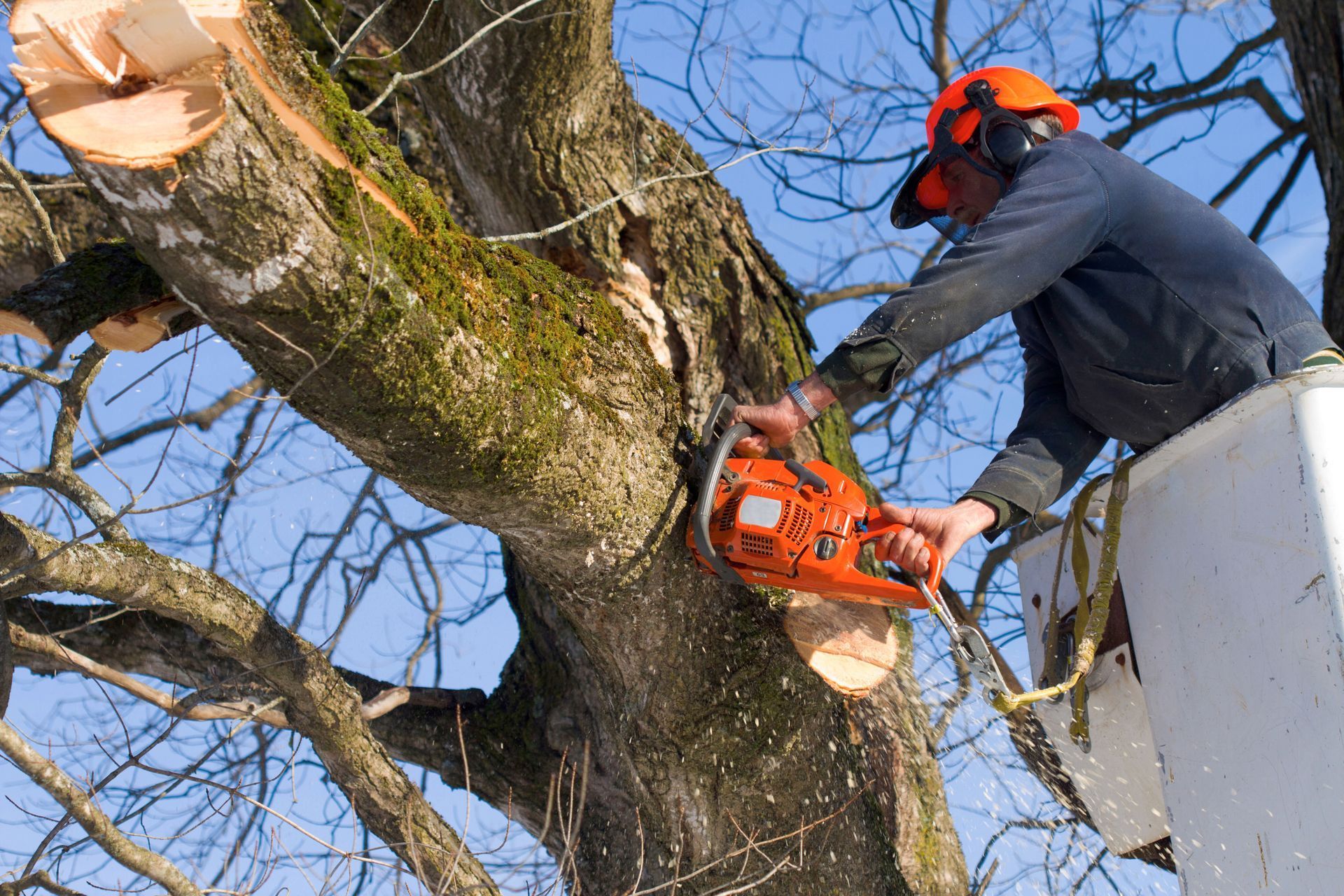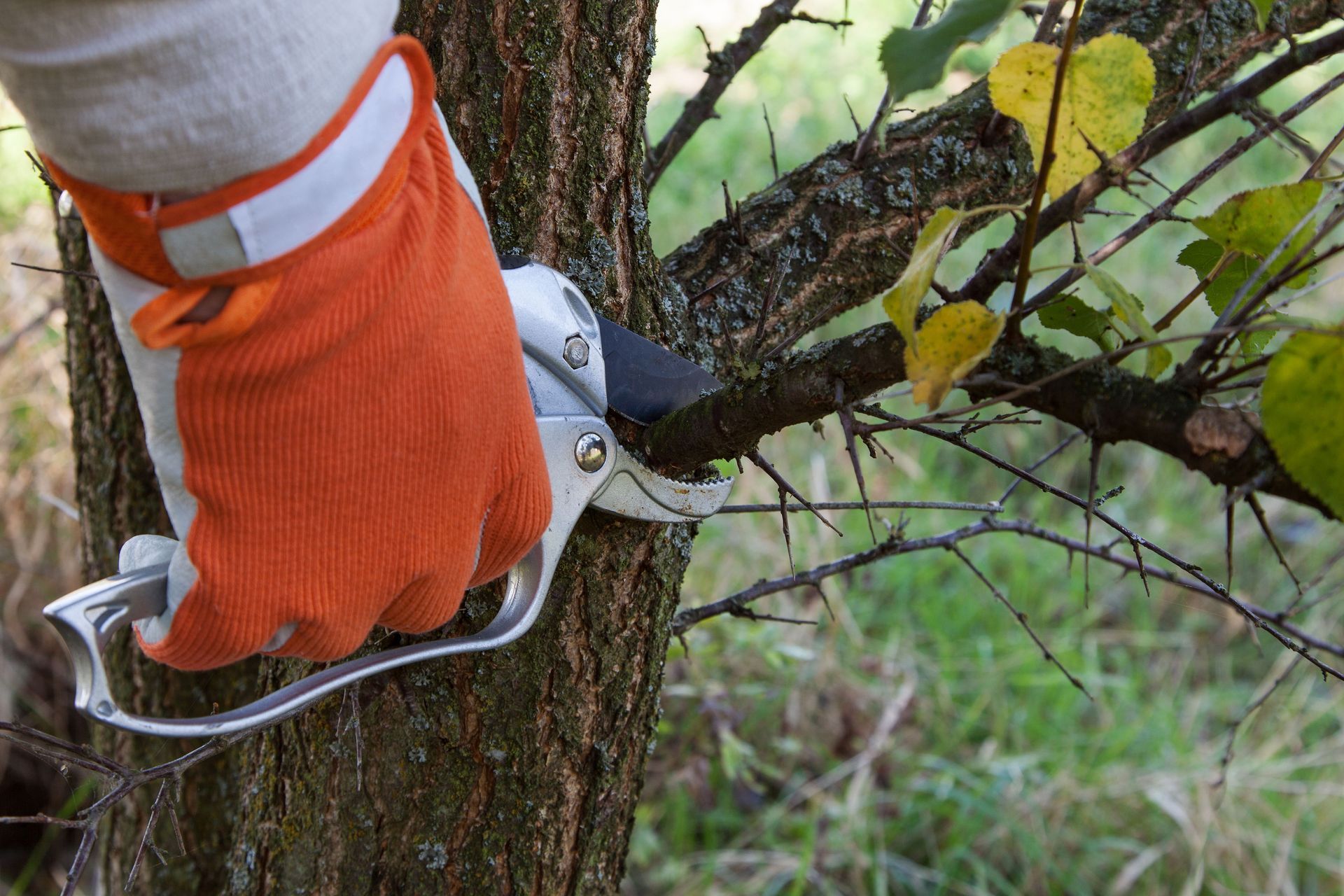May 8, 2020
Colorado Bark Beetle – Why do they kill trees and what can be done to prevent it?
When you drive up to Summit, Grand, and Park counties in the Colorado mountains, there are entire forests of evergreen trees that have died out. The acreage of the dead forests may sometimes even rival that of a forest fire. The trees remain standing, but the needles are rust-colored and starting to drop. This forest damage is the work of one very small culprit – the bark beetle.
Bark beetles make their homes in evergreen trees; primarily ponderosa pines, lodgepole pines, and spruce trees. Mountain Pine Beetle and Spruce Beetle are two species of bark beetle that are more common in higher altitude areas such as Woodland Park, Cascade, and sometimes Monument and Black Forest. The Ips Beetle is the most common species of bark beetle found in the city of Colorado Springs.
Once beetles have infested a tree there is no saving that tree, and tree removal will be necessary down the road.
The most important thing that can be done is to prevent it from spreading on to other trees. Beetle kill trees need to be removed and the logs and slash need to be chipped to eliminate the beetle. Spraying neighboring trees with an insecticide may also help to prevent the beetle from spreading.
If you suspect that your tree may be infested with beetles, contact Colorado Springs’ Precision Tree to assess the situation.
Why do beetles cause so much harm to trees?
The beetles dig tunnels that damage the tree’s vascular system. The beetle colony lifecycle begins when adult beetles fly to find a new tree to lay eggs in. Once beetles take up residence in a tree they start digging out tunnels called egg galleries.
They lay eggs in these tunnels, and when the larva hatch they start digging their own smaller tunnels all over the tree. All of this tunneling clogs up the vascular system of the tree which prevents it from distributing water and resources throughout its trunk and limbs.
The tree starts to die back. Without a properly functioning vascular system, the tree will start to dry out and die back, starting from the canopy inward toward the trunk. The needles start to turn yellow or rust-colored and drop and woodpeckers start digging into the bark looking for the beetle.
Beetles prefer to infest trees that are already in decline due to drought or stress. A tree that has been infested by beetle will die off eventually, though it may not be completely dead until after the beetles have already flown to the next tree.
A forest under attack. Each new generation of adult beetle flies to new host trees to start new colonies.
Beetles can take down entire forests of trees by colonizing from tree to tree. Once a tree is infested with the beetle, it needs to be removed before the beetle can fly to neighboring trees, and the rest of the trees in the area need to be sprayed with an insecticide to keep the beetle out.
Signs of Bark Beetle
Boring dust. There may be yellow or red-brown dust in the crevices of the tree bark. When the beetles enter the tree the start to dig, and the dust is what is being kicked out by the beetle as they tunnel.
Lines in the wood underneath the bark. After the beetles enter the tree, they start to form tunnels called egg galleries. When the eggs hatch, the larva start digging smaller tunnels throughout the tree. When the bark of the tree is peeled back these tunnels can be seen in the form of squiggly lines running up and down the otherwise smooth wood of the tree.
Woodpeckers. Bark beetle is a great snack for the woodpecker. When the beetle is present in a tree, woodpeckers will often follow and will leave nickel to quarter-sized jagged holes in the bark and may even peel back sections of bark in their effort to get to the beetle. This will usually be seen in the lower sections of the tree.
Pitch streamers and pitch tubes . When the tree becomes infested with beetle it starts to ooze sap as a defense mechanism. Bubblegum sized balls of sap called pitch tubes may be visible in the bark at the base of the tree. Streamers of resin that look like candle wax may be visible going down the tree. These are a result of the tree trying to force the beetle out. This is more common with the Mountain Pine Beetle and Spruce Beetle which reside at higher altitudes.
The tree’s needles start to drop. After the beetle has started to colonize the trees vascular system will clog up and it will start to die back. The tree needles will turn rust-colored and start to drop and accumulate under the tree.
Exit holes in the bark. When the beetle larva becomes full-grown, they exit through the bark to find a new host tree. When they fly, they leave holes in the trunk the size of a pencil eraser. Once there is evidence that the beetles may have flown it is important to also check neighboring trees for signs of the beetle.
Preventative measures
Keep trees healthy. Weakened trees are much more susceptible to the Bark Beetle. Beetle kill increases greatly in times of drought when tree wood starts to dry out as this makes for a more preferable habitat for the beetle. Bark Beetles attack healthy trees far less frequently, so the first step to preventing beetle kill is to keep your trees healthy. Watering, trimming, and deep root feeding are examples of things that can be done to keep your trees healthy.
Remove the trees that have already been infested . Contact a tree service company as soon as possible if a tree starts showing signs of the beetle. Once the beetle has taken up residence in the tree it is too late to save that tree, and it is important to remove it to protect the other trees in the area before the beetle matures and flies to new tree hosts. The beetles tend to fly in the late spring, so it is best to have the tree removed prior to that.
Remove all infested wood. Once the tree has been removed, the logs and slash need to be removed from the property right away. The beetle will continue to thrive in, and will eventually fly from the logs and slash even after the tree has been cut down. A tree service company will use a wood chipper to chip up the infested wood which will also kill any remaining beetle so that they cannot fly on to other trees.
Tree spraying to protect the rest of the trees in the area. If beetles have taken up residence in the area it helps to take measures to protect the rest of your trees. Tree spraying for beetle is a great preventative measure that can be done by a tree service company.
This needs to be done before the tree has become infested. The timing of when to spray a tree depends on the species of beetle. Spraying for the Ips Beetle, for example, should be done twice, once in the early spring and again in the summer. The Spruce Beetle and Mountain Pine Beetle only need to be sprayed for once.
A tree spraying professional will spray a high concentration insecticide on the lower trunk of the tree. The insecticide is formulated to kill beetles when they try to get into the tree to lay eggs.
Summary
Bark beetles can cause a massive amount of damage to trees in a short amount of time. Preventative measures such as, keeping a tree healthy and spraying insecticide formulated for beetles, can help keep your trees from becoming infested.
If beetles do take up residence in your tree, it is important to mitigate the situation right away to make sure that the beetles can’t fly to other trees in the area. Infested trees need to be removed, chipped, and taken away from the property to prevent spread.
The condition of the tree’s bark, needles, sap, and the presence of woodpeckers can be signs of beetle infestation.
If a tree appears to have been infested with beetle contact a tree service company as soon as possible to determine the best way to mitigate the situation.
Precision Tree is a local tree trimming and removal company that has been serving the Colorado Springs area for nearly 20 years.




